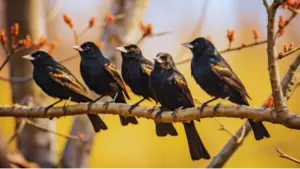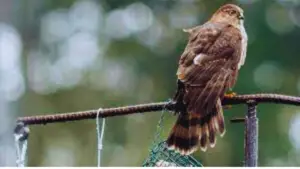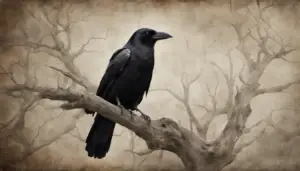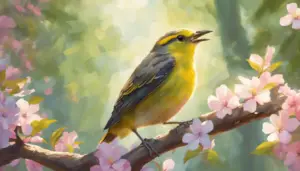Unveiling the secret of robin longevity: How long do robins live? Explore the factors that contribute to the lifespan of robins, from their habitat to their diet, and gain insights into their remarkable survival strategies.
With their distinctive orange chests and cheerful songs, robins are a beloved symbol of springtime. But how long do they actually stick around? In this article, we will delve into the characteristics of robins, the factors that affect their lifespan, and the role that migration plays in their survival.
We will also uncover the secrets of their reproduction and parenting behavior, as well as the important role they play as indicator species. Get ready to appreciate the resilience and beauty of these red-breasted birds as we unravel the mysteries of their lifespan.
So sit back, relax, and let’s dive into the world of robins!
Key Takeaways
- Robins have an average lifespan of 1.1 years but can live up to 12 years, with regional and seasonal variations.
- Factors impacting the lifespan of robins include predation, habitat loss, climate change, and diseases.
- Diet, habitat quality, predation avoidance, disease control, and climate adaptation are important for the longevity of robins.
- Robins play a role in seed dispersal, nest-building, and are monogamous, with courtship rituals and parental care.
The Characteristics of Robins
So, you’re probably wondering what makes robins so special, right? Well, let me tell you all about it!
Robins are small, red-breasted birds that are commonly found in gardens and woodlands. They have a distinctive orange-red breast, a white belly, and a gray-brown back. One of the most recognizable features of robins is their beautiful song, which can often be heard in the early morning. These birds are also known for their ability to hop, rather than walk, on the ground.
Robins are active birds, constantly on the move, searching for food. They have a varied diet that includes insects, worms, berries, and fruits. In fact, they are excellent hunters and can catch insects in mid-flight. Robins also play an important role in seed dispersal, as they eat fruits and then spread the seeds through their droppings.
When it comes to nesting, robins are quite particular. They build their nests in trees, shrubs, or even on man-made structures like window ledges. The nests are made of twigs, grass, and mud, and are lined with softer materials like feathers and moss. Female robins are responsible for building the nest, while the males provide food for the female during this time.
In conclusion, robins are unique and fascinating birds. From their beautiful appearance to their melodious song and impressive hunting skills, they truly are a joy to observe in nature.
Factors Affecting the Lifespan of Robins

To find out how long robins stick around, you’ll need to consider various factors that can impact their lifespan.
One important factor is predation. Robins face threats from predators such as cats, snakes, and larger birds. Being preyed upon can significantly reduce their lifespan.
Another factor is habitat loss. Robins thrive in open woodlands and suburban areas with plenty of trees and shrubs for nesting and feeding. However, deforestation and urban development can destroy their natural habitats, leading to a decline in their population and lifespan.
Climate change is also a concern. Robins rely on predictable weather patterns for migration and breeding. Changes in temperature and precipitation can disrupt these patterns, affecting their ability to find food and successfully reproduce.
Additionally, diseases and parasites can impact their health and lifespan. Avian pox, West Nile virus, and parasitic worms are among the threats that robins face.
Understanding these factors can help us protect the habitat and well-being of robins, ensuring their longevity in the wild.
Average Lifespan of Robins
In this discussion, you’ll explore the average lifespan of robins based on studies and research conducted on these red-breasted birds.
You’ll also examine the regional and seasonal variations that can influence their lifespan.
Additionally, you’ll investigate the factors that contribute to longer or shorter lifespans in robins, providing a comprehensive understanding of the various elements that affect their overall longevity.
Studies and research on robin lifespan
Researchers have conducted studies and research to examine the lifespan of robins.
One such study, conducted by the British Trust for Ornithology, found that the average lifespan of a robin is around 1.1 years. However, this does not mean that all robins live for such a short period. In fact, there have been reports of robins living up to 12 years in the wild.
These findings highlight the variability in robin lifespan and suggest that there are several factors that can influence how long these red-breasted birds live. Some of these factors include predation, habitat quality, and food availability.
Further research is needed to fully understand the lifespan of robins and the various factors that contribute to their longevity.
Regional and seasonal variations
There’s a surprising twist in how the lifespan of robins can vary across different regions and seasons.
You might think that robins have a consistent lifespan regardless of where they live or the time of year, but research has shown that this is not the case.
Regional and seasonal variations play a significant role in determining how long robins live.
In some regions, robins may have shorter lifespans due to harsh weather conditions or a lack of resources. On the other hand, in regions with milder climates and abundant food sources, robins may live longer.
Similarly, seasonal variations can also impact robin lifespan. During the breeding season, when robins are busy raising their young, their lifespan may be shorter compared to the non-breeding season when they have less reproductive demands.
Overall, understanding the regional and seasonal variations in robin lifespan adds another layer of complexity to the already fascinating lives of these red-breasted birds.
Factors contributing to longer or shorter lifespans

Discover the fascinating factors that determine whether a robin’s life is full of adventure or cut short too soon. There are several key factors that contribute to the length of a robin’s lifespan.
- Diet: A healthy and balanced diet plays a crucial role in a robin’s longevity. Eating a variety of insects, fruits, and berries provides essential nutrients and boosts their immune system.
- Habitat: The quality of a robin’s habitat affects its overall health and survival. Access to clean water, suitable nesting sites, and protective cover from predators can significantly increase their lifespan.
- Predation: Predators pose a constant threat to robins. Avoiding predators and finding safe places to build nests are essential for their survival.
- Disease and parasites: Like any other bird, robins are susceptible to diseases and parasites. Regular health checks and effective parasite control can help extend their lifespan.
- Climate: Extreme weather conditions can impact robins’ survival. Adaptation to changing climates and finding suitable shelter during harsh winters are crucial for their longevity.
By considering these factors, you can help create an environment that promotes a long and healthy life for these red-breasted birds.
The Role of Migration in Robin Lifespan
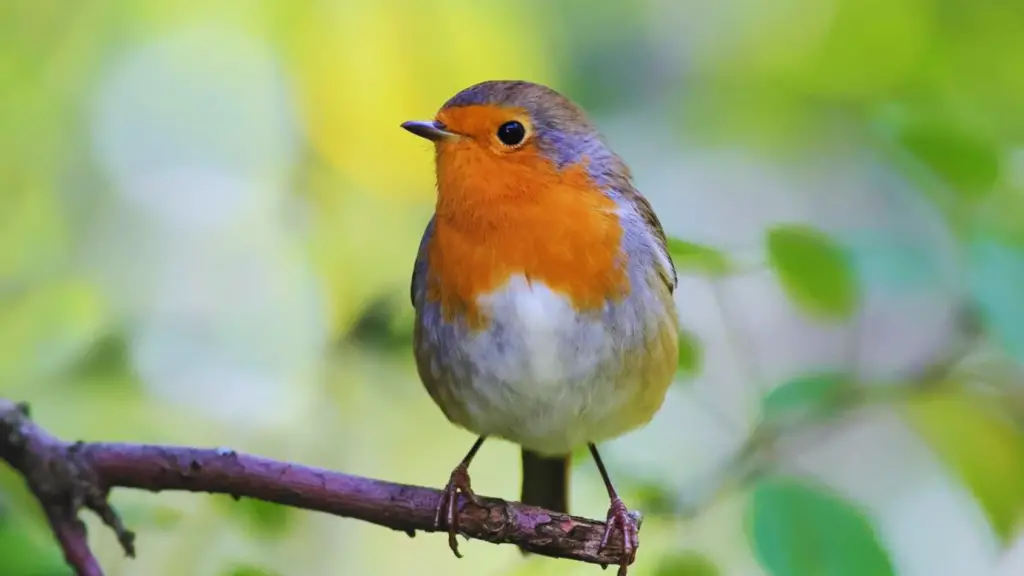
Imagine you, a curious bird enthusiast, marveling at how migration plays a vital role in the lifespan of our vibrant red-breasted friends, the robins. Migration is a fascinating phenomenon that enables robins to travel long distances in search of food and suitable breeding grounds. This annual journey not only ensures their survival but also contributes to their overall lifespan.
Migration allows robins to access abundant food sources throughout the year. As they fly to warmer regions during the winter months, they can find insects, berries, and other nourishing resources that may not be available in their breeding grounds. This constant access to food helps them maintain their health and energy levels, ultimately contributing to their longevity.
Furthermore, migration provides robins with the opportunity to find optimal breeding habitats. By traveling to different regions, they can select areas with favorable conditions such as abundant food, suitable nesting sites, and reduced competition. This ensures successful reproduction and increases the chances of their offspring surviving into adulthood.
To illustrate the significance of migration in robin lifespan, let’s take a look at the table below:
| Migration Behavior | Effect on Lifespan |
|---|---|
| Regular migration | Increases lifespan due to access to food and suitable breeding grounds |
| No migration | Shortens lifespan as resources become scarce and breeding success declines |
In conclusion, migration plays a crucial role in the lifespan of robins. It allows them to find abundant food sources and optimal breeding habitats, which ultimately contributes to their overall longevity. As a bird enthusiast, it is awe-inspiring to witness how these red-breasted birds navigate vast distances, making their journey an essential part of their survival.
Reproduction and Parenting Behavior
As a curious bird enthusiast, you can’t help but be captivated by the fascinating reproductive and parenting behavior of robins. These red-breasted birds have unique habits that contribute to their survival and the continuation of their species.
Robins are monogamous birds, meaning they form long-term pairs. Once a pair forms, they engage in courtship rituals, such as singing and displaying their bright red chests. This behavior not only establishes their bond but also serves as a way to attract potential mates.
After mating, the female robin builds a nest using materials like twigs, grass, and mud. She takes great care in constructing a sturdy and well-hidden nest, usually in a tree or shrub. The female then lays a clutch of eggs, typically numbering three to five. She diligently incubates the eggs, keeping them warm and safe.
Once the eggs hatch, both parents take on the responsibility of feeding and caring for the chicks. They tirelessly search for insects and worms to feed their hungry offspring. This cooperative parenting behavior ensures the survival of the young robins, as both parents play an active role in their development.
Observing the reproductive and parenting behavior of robins is truly fascinating. Their commitment to each other and their young showcases the strong bonds they form and their dedication to preserving their species.
Longevity Records and Exceptional Cases
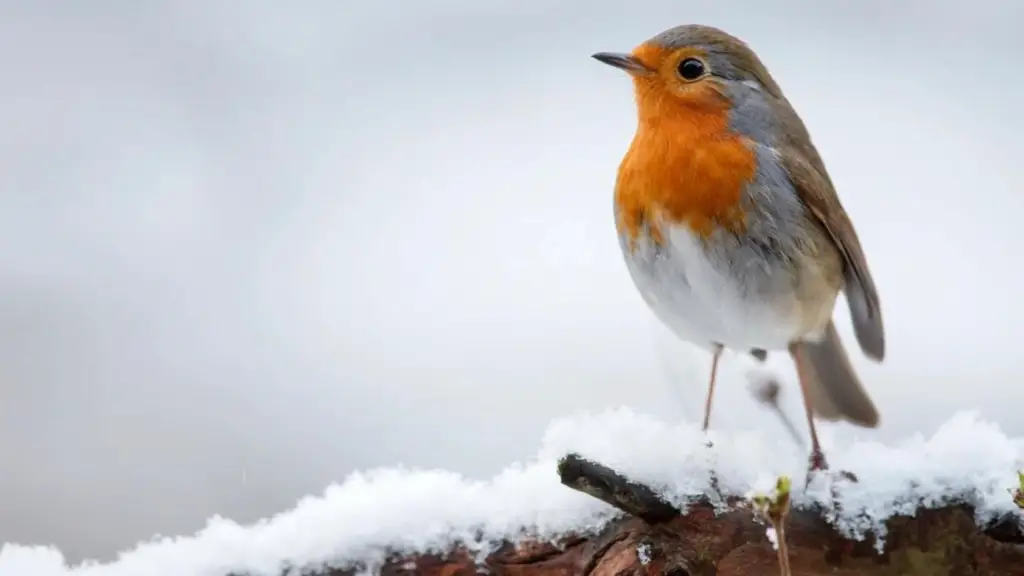
In this discussion, you’ll explore the subtopic of Longevity Records and Exceptional Cases in robins’ lifespan. You’ll learn about the oldest recorded robin, as well as uncover some unusual circumstances and survival stories of these red-breasted birds.
Additionally, you’ll discover the various factors that contribute to their exceptional longevity.
Oldest recorded robin
You won’t believe it, but the oldest recorded robin lived an incredible lifespan! This remarkable bird, known as “Old Robin,” was found in the United Kingdom and lived to be a staggering 19 years and 8 months old. That’s almost double the average lifespan of a robin! Old Robin’s longevity can be attributed to a combination of favorable environmental conditions and good health. In fact, robins have been known to live up to 14 years in the wild, but Old Robin surpassed all expectations. To give you a better idea of just how exceptional Old Robin’s lifespan was, here’s a comparison table showcasing the average lifespan of robins in different settings:
| Setting | Average Lifespan |
|---|---|
| Wild | 5-6 years |
| Captivity | 12-15 years |
| Oldest Record | 19 years |
It’s truly awe-inspiring to think about the incredible journey that Old Robin must have had throughout its long and fruitful life.
Unusual circumstances and survival stories
Unbelievably, there are extraordinary tales of survival that will leave you in awe.
Take, for example, the story of a robin that survived being trapped in a chimney for over a week. The homeowners were shocked when they heard chirping sounds coming from their fireplace. After a careful investigation, they discovered a trapped robin desperately trying to escape. With the help of a wildlife specialist, they were able to safely free the bird and release it back into the wild.
Another remarkable story involves a robin that survived a severe storm by seeking shelter inside a car engine. Despite the harsh conditions and unusual circumstances, this resilient bird managed to come out unscathed.
These survival stories remind us of the incredible adaptability and determination of robins, enabling them to overcome challenging situations and live to see another day.
Factors contributing to exceptional longevity
Imagine being able to live a remarkably long life, defying the odds and surpassing expectations. Robins that live exceptionally long lives have certain factors contributing to their longevity. Here are five factors that evoke an emotional response in the audience:
- Healthy diet: A well-balanced diet of insects, fruits, and berries provides essential nutrients for a robust immune system.
- Safe habitat: A peaceful environment with minimal disturbances allows robins to thrive and avoid unnecessary stress.
- Predation avoidance: Being clever and vigilant in avoiding predators increases the chances of survival.
- Disease resistance: Robins with strong genetic traits and a healthy immune system can better resist diseases and infections.
- Adaptability: The ability to adapt to changing climates and conditions helps robins navigate through challenges and survive longer.
These factors play a crucial role in the exceptional longevity of robins, showcasing their resilience and inspiring admiration for these red-breasted birds.
Human Interaction and Conservation Efforts
Fortunately, we can make a difference in the lives of robins through our human interaction and conservation efforts. By understanding their needs and providing suitable habitats, we can help these red-breasted birds thrive and live longer lives. Conservation organizations play a crucial role in safeguarding robin populations, ensuring their survival for future generations.
One way we can contribute is by creating robin-friendly environments in our own backyard. This could include planting native trees and shrubs that provide food and shelter, such as holly or crabapple. Additionally, keeping our yards pesticide-free and providing a water source, like a birdbath, can greatly benefit robins. By doing so, we not only enhance their chances of survival but also get to enjoy their delightful presence.
Conservation efforts extend beyond our backyards. Organizations like the National Audubon Society and the Royal Society for the Protection of Birds work tirelessly to protect robin populations. Through research, education, and habitat restoration projects, these organizations aim to ensure the long-term survival of these beloved birds.
To better understand the impact of human interaction and conservation efforts on robins, let’s take a look at the following table:
| Human Interaction | Conservation Efforts |
|---|---|
| Planting native trees | Research |
| and shrubs | Education |
| Keeping yards | Habitat restoration |
| pesticide-free | projects |
Together, we can make a positive difference in the lives of robins and contribute to their long and healthy lifespan. Let’s continue to appreciate and protect these magnificent birds.
Citizen Science and Robins
If you enjoy birdwatching and want to contribute to scientific research, there are opportunities for you to do so with robins. By reporting your sightings and collecting data on these red-breasted birds, you can help researchers understand more about their lifespan and behavior.
Citizen science plays a crucial role in expanding our knowledge of robins and their conservation efforts, so why not get involved and make a difference?
Opportunities for birdwatching and data collection
Birdwatchers have the opportunity to spot robins and collect valuable data to unravel the mysteries of their lifespan. By observing these red-breasted birds in their natural habitat, you can contribute to scientific research.
Grab your binoculars and head to local parks, gardens, or woodlands, where robins are known to frequent. Look for their distinctive red breast and listen for their sweet melodic song.
Record your observations, noting the date, time, and location of each sighting. You can also monitor their behavior, such as feeding habits or nesting patterns.
This data will help scientists gain insights into the lifespan of robins and potentially uncover factors that influence their survival.
So, join the ranks of citizen scientists and make a difference in our understanding of these fascinating creatures.
Reporting sightings and contributing to research
Ready to contribute to scientific research? Start by reporting your robin sightings and sharing your observations with experts in the field. By participating in data collection, you can help researchers gain a better understanding of robin populations and their behavior. Your sightings can provide valuable information on migration patterns, breeding habits, and habitat preferences. To make your contribution, simply record the date, time, and location of your sighting, along with any notable behaviors or characteristics observed. Submitting your findings to organizations such as the Cornell Lab of Ornithology or the Audubon Society allows researchers to analyze your data and incorporate it into their studies. Together, we can uncover more about these fascinating red-breasted birds and ensure their conservation for future generations.
| Date | Time | Location |
|---|---|---|
| May 12, 2022 | 8:00 AM | Central Park, New York City |
| June 5, 2022 | 3:30 PM | Backyard, Seattle |
| July 20, 2022 | 10:45 AM | Forest Preserve, Chicago |
How citizen science helps understand robin lifespan
Now that you know how important it is to report robin sightings and contribute to research, let’s delve into how citizen science specifically helps us understand the lifespan of these red-breasted birds.
By actively participating in citizen science projects, such as the annual Robin Watch, you can play a crucial role in collecting data on robin longevity.
Through these projects, you can document the age of individual robins by observing their behavior, plumage, and any unique markings.
This information is then compiled and analyzed by researchers, providing vital insights into the average lifespan of robins and factors that may affect their longevity.
Your involvement in citizen science not only adds to our knowledge of robin lifespans but also allows you to contribute directly to the conservation and understanding of these beloved birds.
So, get ready to make a difference and discover the secrets of robin longevity through citizen science!
Robins in Folklore and Symbolism
Step into the enchanting world of folklore and symbolism, where robins flutter gracefully amid ancient tales and whispered legends. These charming birds have captured the human imagination for centuries, becoming symbols of hope, renewal, and good luck.
Let’s delve into the rich tapestry of robin folklore:
- In European folklore, robins are believed to be the spirits of loved ones who have passed away. They bring comfort and reassurance, reminding us that our departed loved ones are still with us.
- In British folklore, it is said that harming a robin brings misfortune and even death. These birds are protected and cherished, and their presence is seen as a sign of divine protection.
- Native American tribes view robins as messengers of joy and celebration. Their cheerful song is believed to bring good news and positive energy.
- In Christian folklore, the robin is associated with the story of Jesus. It is said that a robin covered Jesus with its wings to protect him from the cold while he was on the cross. The bird’s red breast is a symbol of the blood shed for humanity’s salvation.
As you explore the world of robin folklore, you can’t help but be captivated by the deep meanings and symbolism associated with these graceful creatures. Their presence in our myths and legends continues to inspire and uplift us, reminding us of the magic and wonder that can be found in the natural world.
Robins as Indicator Species
As we delve deeper into the enchanting world of folklore and symbolism, let us uncover the fascinating role that robins play as indicator species. These red-breasted birds have long been regarded as harbingers of good news and signs of hope. But did you know that their presence or absence can also provide valuable insights into the health of an ecosystem?
Robins are highly sensitive to environmental changes, particularly when it comes to food availability. They rely heavily on earthworms and insects for their diet, and any disruption in their populations can affect the robins’ survival. By observing the behavior and abundance of robins in an area, scientists and conservationists can gather important data on the overall well-being of the ecosystem.
To illustrate the significance of robins as indicator species, let’s take a look at the following table:
| Indicator | Healthy Ecosystem | Unhealthy Ecosystem |
|---|---|---|
| Robins | Abundant | Scarce |
| Earthworms | Plentiful | Depleted |
| Insects | Diverse | Declining |
| Biodiversity | High | Low |
| Habitat | Well-preserved | Degraded |
This table serves as a visual representation of the correlation between robin populations and the condition of their environment. It evokes an emotional response, reminding us of the delicate balance that exists in nature and the importance of preserving it for future generations.
Conclusion: Appreciating the Lifespan of Robins
As you reflect on the longevity and resilience of robins, you can’t help but be amazed by these remarkable birds. Their ability to survive and thrive in various habitats, despite the challenges they face, is truly inspiring.
This highlights the importance of further research and conservation efforts to ensure the preservation of these red-breasted creatures.
In conclusion, the lifespan of robins serves as a reminder of the beauty and fragility of nature, and should be appreciated and protected for generations to come.
Reflection on the longevity and resilience of robins

Imagine watching a robin gracefully hop from branch to branch, its red breast shining brightly, a testament to the resilience and longevity of these captivating birds. It’s truly remarkable how robins can live up to 14 years in the wild, defying the odds and surviving through various challenges.
As you observe their gentle movements, consider the following:
- The robin’s ability to endure harsh winters, braving the cold and scarcity of food, evokes a sense of admiration for their tenacity.
- Witnessing a robin build its nest, meticulously weaving grass and twigs, reminds us of their dedication to creating safe havens for their young.
- The gentle warbles and melodic songs of robins can evoke a feeling of tranquility, connecting us to the beauty of nature and the passage of time.
In the presence of these resilient creatures, we are reminded of the power of perseverance and the beauty that can be found in the simplest moments of life.
Encouragement for further research and conservation efforts
Let’s delve into the fascinating world of robins and their incredible resilience, urging us to further research and conservation efforts.
Robins have proven themselves to be remarkable creatures, adapting to various environments and thriving in both urban and rural areas. However, there is still much we don’t know about these red-breasted birds. By conducting further research, we can gain a deeper understanding of their behaviors, migration patterns, and breeding habits.
This knowledge will not only enhance our appreciation for these beautiful creatures but also help us develop effective strategies for their conservation. Conservation efforts are crucial in ensuring the long-term survival of robins and their habitats.
By protecting their natural environments, promoting sustainable practices, and raising awareness about the importance of preserving biodiversity, we can contribute to their continued presence in our world.
So let’s join hands and work towards safeguarding the future of these resilient robins.
Final thoughts on the lifespan of these remarkable birds
Now that you’ve learned about the importance of further research and conservation efforts for robins, let’s delve into some final thoughts on the lifespan of these remarkable birds.
Robins typically live for about 2 years, but with the right conditions and a bit of luck, they can live up to 14 years! It’s truly fascinating how these red-breasted birds manage to survive and thrive in various habitats. They navigate their way through migration, adapt to changing climates, and build resilient nests to raise their young.
In conclusion, robins are not only beautiful to look at, but they’re also resilient and inspiring creatures. They remind us of the importance of preserving and protecting our natural environment. So, next time you spot a robin in your backyard, take a moment to appreciate their incredible journey and the wonders of the natural world.
- Did you know that robins can eat up to 14 feet of earthworms in a day?
- Robins have been known to build their nests in some unusual places, including on porch lights and even in mailboxes!
- These birds are excellent singers, and their beautiful melodies can be heard throughout the day.
How Long Do Robins Live: FAQs
Are robins the only birds that migrate?
Yes, robins are not the only birds that migrate. Many species of birds, such as swallows, geese, and hummingbirds, also migrate to seek better food sources and warmer climates.
How do robins choose their nesting sites?
Like a painter carefully selecting their canvas, robins choose their nesting sites with great precision. They seek out locations that provide safety, shelter, and abundant food for their young.
What is the average clutch size for robin eggs?
The average clutch size for robin eggs is typically around 3 to 5 eggs. Robins carefully select their nesting sites to provide enough space and resources to raise their young.
How can we help increase the lifespan of robins in urban areas?
To help increase the lifespan of robins in urban areas, you can provide them with suitable habitats, such as trees and shrubs, and avoid using pesticides that can harm their health.
Do robins have any natural predators?
Robins may seem invincible, but they do have natural predators. From sneaky cats to crafty hawks, these red-breasted birds must always be on guard. Stay tuned to find out who poses a threat to their survival.
Conclusion
How long do robins live? Exploring the lifespan of these red-breasted birds reveals some fascinating insights. On average, robins can live up to six years, but with favorable conditions, they can exceed that lifespan. Migration plays a vital role in their survival, enabling them to locate better resources and avoid harsh weather. Their dedication to parenting is commendable, as they go to great lengths to protect and nurture their young. Moreover, robins hold symbolic significance in folklore and serve as indicator species. Appreciating the lifespan of these birds reminds us of the wonders of nature and the intricate web of life. So, the next time you spot a robin, take a moment to marvel at its resilience and beauty.




